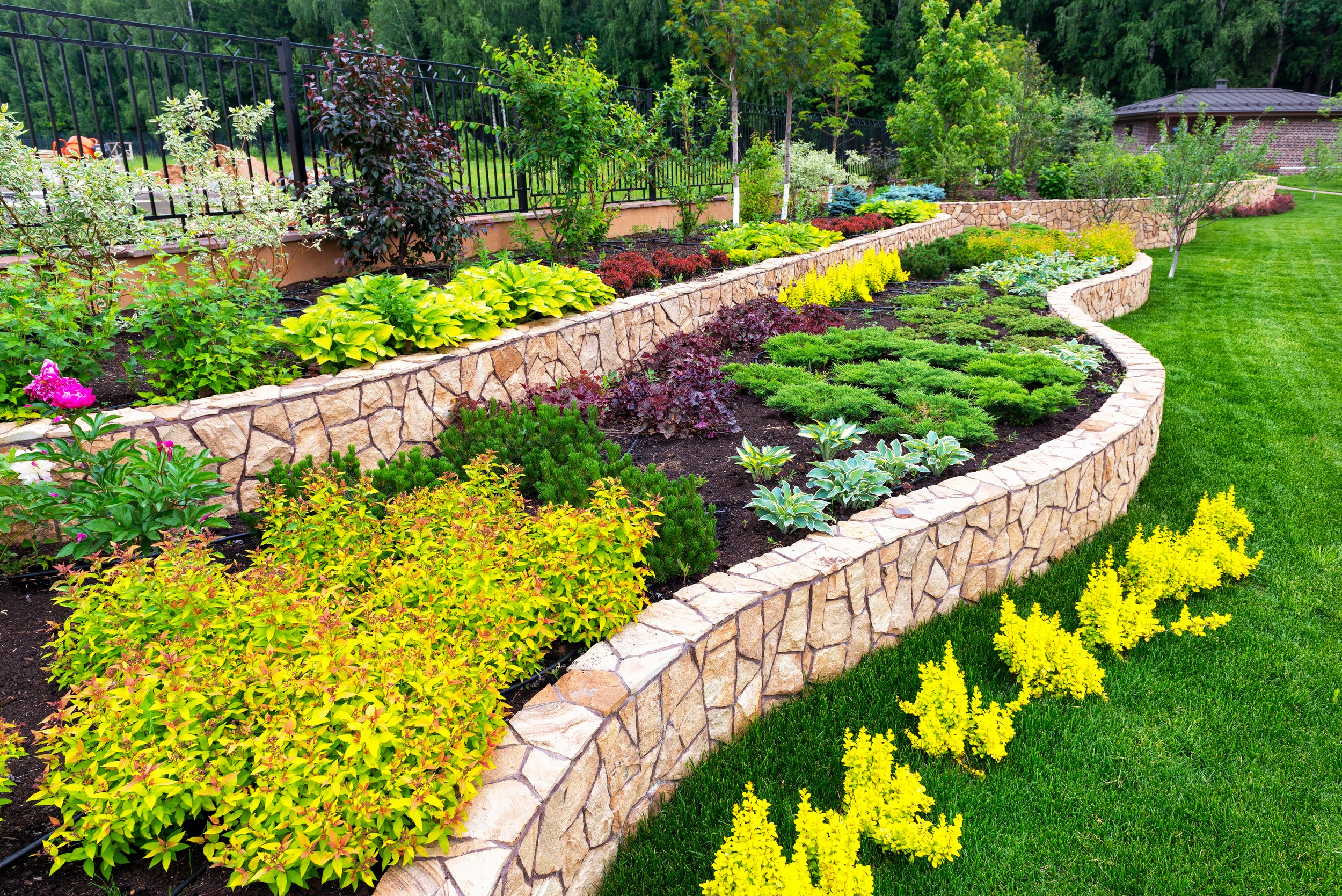The 10-Minute Rule for Hilton Head Landscapes
The 10-Minute Rule for Hilton Head Landscapes
Blog Article
An Unbiased View of Hilton Head Landscapes
Table of ContentsThe Buzz on Hilton Head LandscapesUnknown Facts About Hilton Head LandscapesRumored Buzz on Hilton Head LandscapesSome Known Incorrect Statements About Hilton Head Landscapes Some Known Details About Hilton Head Landscapes Rumored Buzz on Hilton Head LandscapesThe Basic Principles Of Hilton Head Landscapes Not known Details About Hilton Head Landscapes
Type compatibility is additionally a significant part of unity in designone or more noticeably different types benefit comparison and focus, however generally all various other forms ought to have some similarities for a combined look. Appearance refers to how coarse or great the surface of the plant or hardscape material feels and/or looks.
Instances of plants with coarse structure consist of philodendrons, agaves, bromeliads, hollies, hands, and hydrangeas. Features that develop fine texture include tiny vegetation; thin, strappy fallen leaves (lawns) or high, slim stems; small, thick twigs and little branches; long stems (vines); and little, fragile flowers.
An Unbiased View of Hilton Head Landscapes
A lot of plants are moderate texture, because they can not be called having either rugged or fine structure. They are characterized by medium-sized leaves with easy shapes and smooth edges. The average-sized branches are not densely spaced neither commonly spaced, and the overall kind is usually rounded or mounding. Medium-textured plants serve as a background to link and link the rugged- and fine-textured plants.

To make a room really feel smaller, place the crude structures along the external boundary and the great appearances closest to the viewer. The detail of the rugged appearance makes the plants show up closer and makes the area feel smaller. The viewed structure of plants can additionally alter with the distance from the plant.
Not known Facts About Hilton Head Landscapes
Bold shades increase the contrast and make the appearance appear coarser, while soft colors can flatten structure. Hardscape with a coarse texturesuch as very rough rocks and strong, big timberstends to make all plant material show up a lot more medium textured. Designers commonly create a structure research study (Figure 8) on paper to assist decide the plan of plant products.
Shade in plant product and hardscape adds rate of interest and range to the landscape. Shade is the most noticeable element in the landscape and is generally the focus of a lot of property owners; nonetheless, it is also the most short-lived aspect, typically lasting only a couple of weeks a year for individual plants.
The 15-Second Trick For Hilton Head Landscapes
A basic summary of the color wheel consists of the 3 primary colors of red, blue, and yellow; the 3 additional shades (a mix of two primaries) of eco-friendly, orange, and violet; and 6 tertiary colors (a mix of one adjacent key and second shade), such as red-orange. Color concept explains the relationship of colors per other and exactly how they need to be used in a composition.

Similar (often called unified) shade plans are any type of three to five shades that are nearby on the color wheel, such as red, red-orange, orange, yellow-orange, and yellow, or blue, blue-violet, and violet (Landscaping bluffton sc). The colors relate to every other because they generally include two primaries mixed to form an additional and 2 tertiary colors, which implies they share typical residential properties
Complementary colors are often found naturally in blossoms; an usual pair is yellow and violet. Shade is discovered in the flowers, vegetation, bark, and fruit of plants.
The smart Trick of Hilton Head Landscapes That Nobody is Talking About
Environment-friendly vegetation in all its numerous shades is the leading shade by amount, yet various other colors record focus quicker as a result of their high comparison to the shade green. Shade is additionally found in structures, rocks, pavers, wood, and furnishings. The majority of shades in all-natural materials, such as stone and wood, are generally muted and tend to be variations of brownish, tan, and light yellow.
Shades have buildings that can influence emotions, spatial perception, light top quality, equilibrium, and emphasis. Trendy shades have a tendency to be calming and need to be used in areas for relaxation and calmness.
Our Hilton Head Landscapes Diaries
The "temperature level" of colors can additionally affect the perception of distance. Cool colors tend to decline and are regarded as being farther away, making a space really feel bigger. Cozy colors tend to breakthrough and are viewed as being closer, making a room feel smaller sized. Color can likewise be made use of to record focus and straight views.
Intense yellow, which has the highest possible intensity, likewise has a high comparison with all other shades (usually described as a "pop" of color) and should be made use of moderately. A percentage of extreme shade has as much visual weight as a big amount of a much more suppressed or weak color.
Similar (in some cases called harmonious) color design are any type of 3 to five shades that are adjacent on the shade wheel, such as red, red-orange, orange, yellow-orange, and yellow, or blue, blue-violet, and violet. The colors relate per various other due to the fact that they generally consist of 2 key shades mixed to develop a second and 2 tertiary shades, which indicates they share usual residential properties.
The Only Guide for Hilton Head Landscapes
Corresponding shades are typically found naturally in flowers; a typical set is yellow and violet. Shade is located in the flowers, vegetation, bark, and fruit of plants.
Environment-friendly foliage in all its different shades is the leading color by amount, yet other colors record attention quicker as a result of their high comparison to the shade green - bluffton landscaping - https://www.artstation.com/stevengonzales53/profile. Color is also discovered in structures, rocks, pavers, timber, and furniture. A lot of colors in natural products, such about his as stone and timber, are generally soft and often tend to be variants of brownish, tan, and pale yellow
Some Known Questions About Hilton Head Landscapes.
Colors have buildings that can impact emotions, spatial perception, light quality, equilibrium, and focus. Cool shades often tend to be calming and should be utilized in areas for leisure and peacefulness.
Trendy shades often tend to decline and are regarded as being farther away, making an area feel larger. Color can additionally be utilized to capture attention and direct views - https://hilton-head-landscapes.webflow.io.
Brilliant yellow, which has the highest strength, additionally has a high comparison with all other colors (often defined as a "pop" of color) and ought to be made use of moderately. A small amount of intense color has as much visual weight as a big quantity of a more restrained or weak shade.
Report this page